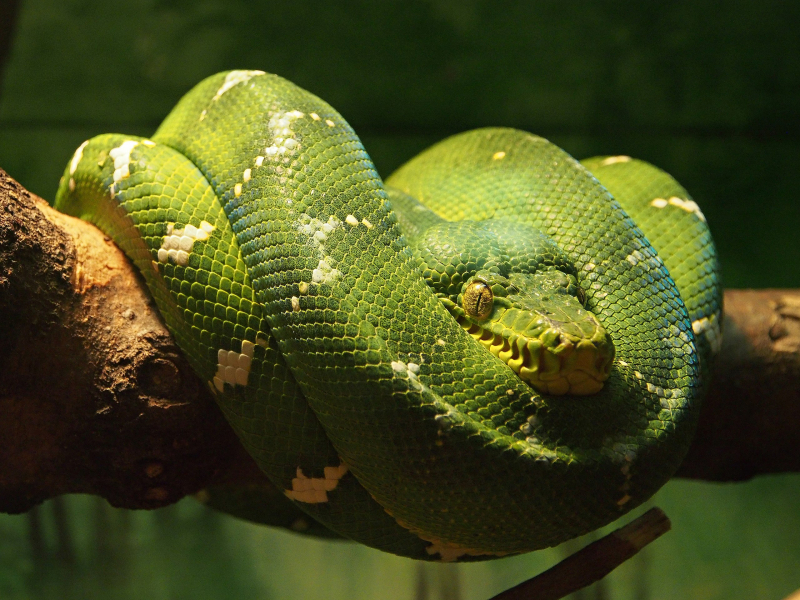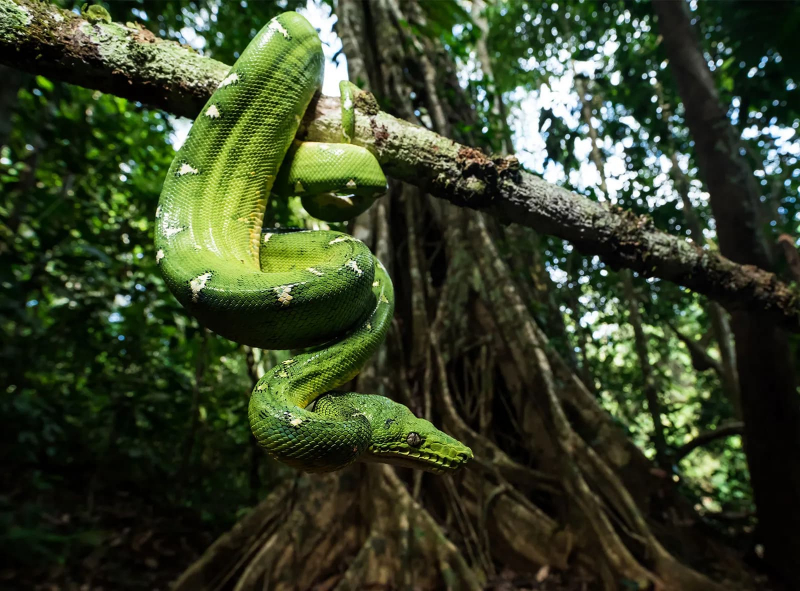Emerald Tree Boa

The Emerald Tree Boa (corallus caninus) is a non-venomous boa species found in the rainforests of South America. Corallus batesii has been separated from C. caninus as a species since 2009. Henry Walter Bates, an English naturalist, and adventurer are remembered by the specific or subspecific term, batesii, for whom Batesian mimicry is also named. The length of an adult is roughly 6 feet (1.8 meters). They have front teeth that are proportionately larger than those of any other non-venomous snake and are highly developed.
The common color pattern is an emerald green background color with so-called "lightning bolts" or an uneven white zigzag stripe along the back and a yellow belly. The vivid coloring and markings make South American snakes easily identifiable. Before ontogenetic coloring takes place and the animals change to emerald green (after 9–12 months of age), juveniles range in hue from different tones of light and dark orange to brick-red. The green tree python (Morelia Viridis), a type of snake whose hatchlings and young can also be canary yellow or brick-red, exhibits the same behavior. Contrary to common perception, emerald tree boas do not have juveniles that are yellow like green tree pythons do. Eventually, as they age, their true emerald color sets in, usually by the time they are around a year old. The snake’s eyes are a similar greenish-yellow shade with typical thin, slit-shaped pupils.











